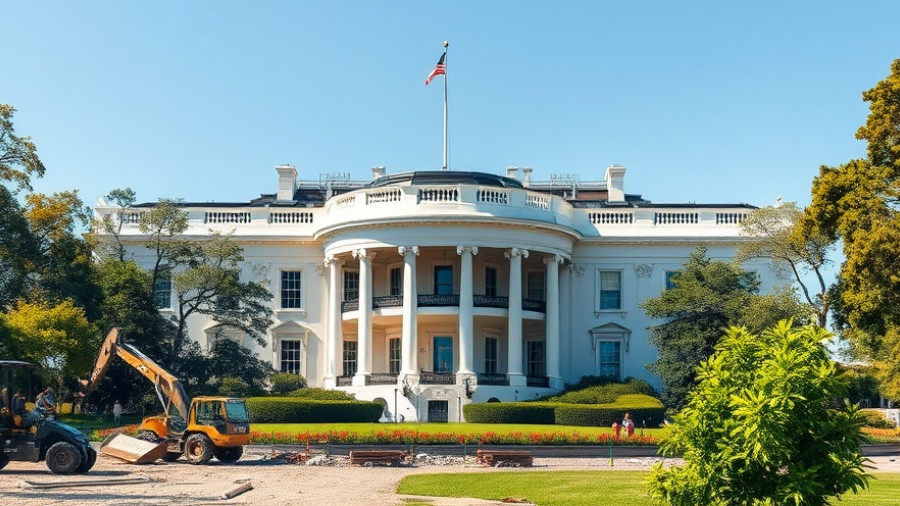
The Bold Transformation of the White House East Wing
In a surprising decision that has captured national attention, the East Wing of the White House is undergoing a complete transformation, making way for a new $300 million ballroom. This ambitious project, championed by President Donald Trump, comes at a time when the public is both curious and skeptical about the implications of such a costly endeavor amidst ongoing political debates and national concerns over government spending.
The Vision Behind the Ballroom
President Trump asserts that the new ballroom is essential for accommodating state functions and elegant gatherings, proclaiming it will serve as a "superb" venue comparable to none other. The current East Room, which can only host around 200 guests, has often been perceived as limiting for large presidential events. During an East Room dinner for supporters, Trump emphasized the need for larger spaces, promising that the new ballroom, with a capacity of nearly 1,000, would change the way state dinners and other gatherings are executed at the White House.
Funding the Future: Who's Paying for the Grand Ballroom?
The choice of financing has also raised eyebrows. Trump has claimed that no public funds will be utilized for the construction, asserting that donations from private citizens and businesses will cover the costs. Significant contributions so far have included funds from YouTube, settling a dispute filed by Trump. However, critics question the transparency and the exact funding sources as ongoing construction continues without a detailed public breakdown of donor contributions.
Historical Implications of the East Wing’s Demolition
The demolition of the East Wing, which for decades housed the first lady's offices and was integral to the White House's aesthetics, raises important questions about preservation and historic integrity. While Trump has stated that the project respects the historical elements already in place, experts warn that such renovations can sometimes overlook or underestimate the value of the originals in terms of cultural significance.
Future Uses and Community Engagement
Administrative officials confirm plans to preserve key historical components from the East Wing for future educational programs. This response may serve to ease public concern about the demolition. Crafting an engaging storyline for this project is crucial, not only for the current administration but also for the communities that look to the White House as an emblem of historic and cultural value.
Where Do We Go From Here? Predictions for the Site
Anticipation surrounds the expected completion of the ballroom before Trump's term concludes in January 2029. Should the project be completed on time, it may become a symbol of Trump’s presidency and serve as a case study in modern governmental architecture. The grandeur of the ballroom—resembling Trump’s Mar-a-Lago in spirit—could potentially redefine White House functions moving forward.
Conclusion and Perspectives
The East Wing’s transformation reflects a broader debate about the nature of progress and preservation in one of the nation’s most recognizable buildings. As the White House evolves, the public remains engaged in discussions surrounding the implications of such massive projects, both financially and culturally.
As the construction continues, communities and stakeholders are encouraged to seek further information on the project, share their thoughts, and engage with local representatives about the future uses of the White House’s historic spaces.
 Add Row
Add Row  Add
Add 




Write A Comment